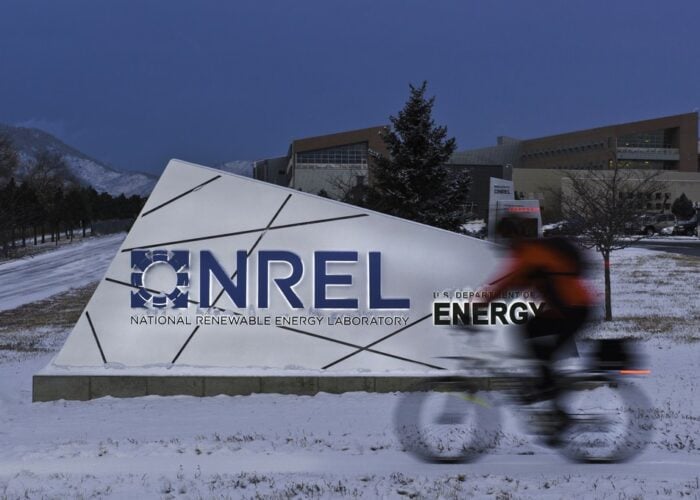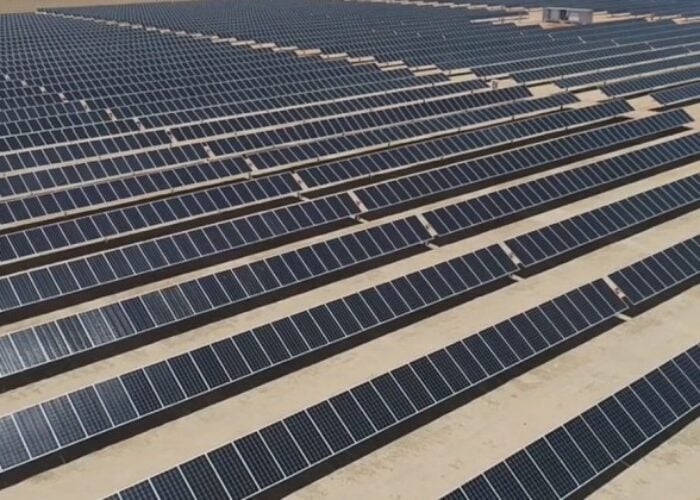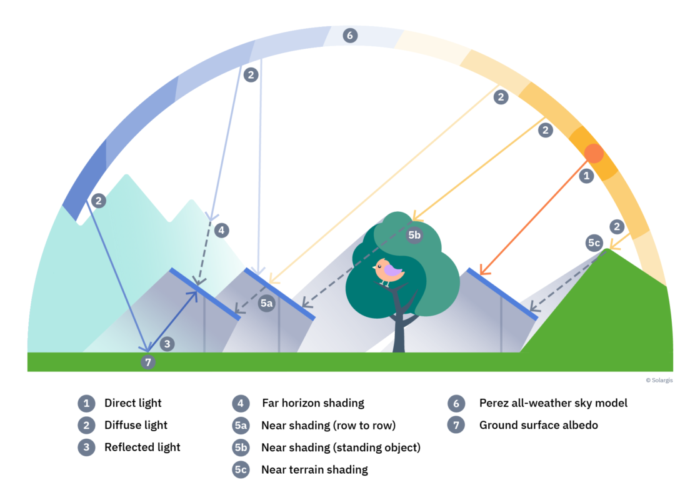
The rapid adoption of renewables such as PV and wind presents a growing challenge for grid operators in Europe and beyond. Ben Moore reports on RESPONDENT, a European-funded project that uses cutting edge space technologies to help integrate variable renewable energy into the grid.
As the world collectively seeks to reduce overreliance on fossil fuels to run the global economy and accelerate the transition to societies powered by renewable energy, solar PV and wind power in particular have emerged as leading technologies in the effort to decarbonise the power generation sector.
Try Premium for just $1
- Full premium access for the first month at only $1
- Converts to an annual rate after 30 days unless cancelled
- Cancel anytime during the trial period
Premium Benefits
- Expert industry analysis and interviews
- Digital access to PV Tech Power journal
- Exclusive event discounts
Or get the full Premium subscription right away
Or continue reading this article for free
Cost-effective, clean and plentiful, these renewable energy sources are seen as crucial in helping to meet international climate targets, such as the Paris Agreement and the European Green Deal, and have seen a major uptick in usage over the last two decades. Europe, in particular, has striven to drastically escalate its switch to renewable energy sources (RES), which now account for almost one quarter of the bloc’s final energy use as of 2023.
While ambitious, this rapid adoption of RES is not seamless and presents a growing challenge for grid operators. While many are eager to transition away from legacy systems and traditional fossil fuels in favour of cleaner, renewable sources of energy as soon as possible, questions and difficulties remain with how to maintain grid stability while integrating increasingly variable energy sources. Unlike power that is generated from fossil fuels that can be adjusted to meet demand, renewable energy production is, by its nature, inherently non-dispatchable. Energy sources such as solar and wind are dependent on favourable weather conditions and daily cycles, which in turn can lead to undesired fluctuations that have the potential to drastically destabilise the power grid.
For instance, high winds during periods of low electricity demand can lead to excess generation. While excess generation and an abundance of power may sound like a good thing, such scenarios have the potential to overload grids and cause curtailment if the appropriate storage solutions are not available to retain that power. Without accurate predictions of renewable energy output, grid operators will struggle to balance supply and demand effectively.
Conversely, sudden or unexpected drops in wind or cloud cover can create shortages during peak periods when grid demand is highest, risking blackouts. Variations in renewable energy can also lead to cascading failures brought on by a destabilised grid frequency.
As we can see, managing the intrinsic imbalances that come with the desire to increase RES integration while also ensuring an uninterrupted power supply is a difficult task, one that requires advanced technologies and new operational paradigms to address if fossil fuels are to be phased out in the coming years and decades. Indeed, it is certain that innovative solutions are needed to fully optimise and ensure the successful integration of renewable energy while maintaining the reliability and efficiency of modern grids.
RESPONDENT’s solution: innovative tools for a sustainable energy future
Funded by Horizon Europe and managed by the EU Agency for the Space Programme (EUSPA), the RESPONDENT project is contributing to the determination of the EU to decarbonise by developing scalable, practical solutions to the problem of RES integration into legacy grids. Through innovative pilots and strategic collaborations, the project is demonstrating how advanced technologies have the potential to revolutionise renewable energy systems—ensuring a sustainable and resilient energy future for both Europe and the wider world. As Europe works to integrate greater volumes of RES into its grids, RESPONDENT is helping address the critical challenge of maintaining grid stability and energy security amidst fluctuating energy production.
Central to RESPONDENT’s innovation in this regard is the integration of AI-driven forecasting models that work in tandem with European space technologies such as Galileo and Copernicus. Leveraging these
tools, the project delivers precise, real-time forecasts for solar and wind energy generation, enabling grid operators to better balance supply and demand. These advancements not only seek to improve the reliability of renewable energy but also reduce dependence on fossil fuels, supporting Europe’s climate goals while strengthening the bloc’s energy independence.
Advanced power generation forecasting
The accurate and timely forecasting of renewable energy output is a cornerstone of grid stability – one that must be ensured if RES are to be widely adopted. In pursuit of this, RESPONDENT’s power generation forecasting module combines data from the Copernicus Climate and Atmosphere Monitoring Service (CAMS) and the European Centre for Medium-Range Weather Forecasts ERA5, which provides hourly estimates of a large number of atmospheric, land and oceanic climate variables with local data coming from proprietary developed, in-situ IoT weather stations that are enabled to deliver precise, real-time predictions.
RESPONDENT’s bespoke power generation forecasting module, which is currently live and available for purchase, utilises artificial intelligence and machine learning (AI/ML) algorithms to analyse a range of variables, such as solar radiation, wind speed and cloud cover, and can provide forecasts with a deviation of less than 10%. With such a precise level of accuracy, the project’s module will enable grid operators to anticipate fluctuations in solar power generation, which can be monitored via the custom online dashboard that has been developed and implemented by the project team. Furthermore, it is envisioned that energy dispatch schedules to minimise reliance on backup systems will be actualised and that users of the module will be able to avoid curtailment by efficiently utilising available renewable energy.
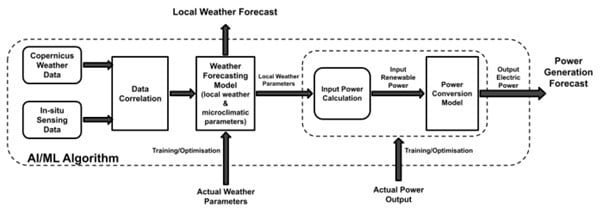
Indeed, the effectiveness of the project’s innovative power generation forecasting module was realised and witnessed firsthand by stakeholders and end-users during RESPONDENT’s first pilot demonstration in Athens in mid-October of 2024, an occasion where the project showcased the capability of this module to predict solar output under varying conditions. With these real-world and real-time results, the project was able to successfully highlight the system’s reliability, accuracy and potential for large-scale implementation and easy use, across Europe and beyond.
Demand forecasting for balanced operations
While the ability to accurately forecast RES is critical for the future of its integration, it must also be paired with the capacity to produce accurate demand predictions to ensure grid stability. This is where RESPONDENT’s demand forecasting module works in tandem with its power generation forecasting, analysing historical consumption data alongside real-time factors such as weather conditions, socioeconomic trends and grid load patterns.
In the first instance, RESPONDENT’s proprietary forecasting algorithms were developed for different types of consumers, including residential, commercial and industrial. For that, once historical consumption data is gathered, clusterisation algorithms are applied, with specific algorithms that have been developed for each type of consumer and take into account socio-economic and climatic factors. Moreover, these algorithms are iteratively improved, implementing change point detection and concept drift detection algorithms.
With RESPONDENT’s demand forecasting module, grid operators are enabled to prepare for a variety of different scenarios, including the fluctuations of peak and off-peak demand, the reduction of energy waste by aligning generation with actual consumption and to effectively manage the growing electrification of sectors that a society and economy function on, such as transportation and heating.
When combined, the integration of both supply and demand forecasts of RESPONDENT combine to provide a holistic view of grid dynamics, ensuring that renewable energy systems operate efficiently even under the variable conditions of RES output and the socio-economic activity of a given area.
Timing and synchronisation: Galileo-enabled precision
To maximise grid stability, the voltage phase angle differences between two nodes in the grid must remain within strict limits, especially in systems with high renewable energy penetration. However, these phase angle differences can only be accurately measured through precise synchronisation of devices that share a common time reference.
With this need in mind, RESPONDENT’s Timing and Synchronisation (T&S) module has sought to enhance this capability through the use of Galileo-enabled Phasor Measurement Units (PMUs). Galileo, the EU’s Global Navigation Satellite System, offers remarkable advantages for RESPONDENT’s objectives. Its sub microsecond time synchronisation accuracy supports fault detection, improves frequency stability monitoring and reduces the risk of outages. Compared to its GPS counterpart, Galileo provides heightened security against signal interference, ensuring more robust and reliable grid operations.
These features are critical as the trend toward grid automation increasingly depends on secure and trusted data acquisition and processing. Automated decisions based on faulty or counterfeit data could lead to catastrophic consequences, given the critical nature of power grid infrastructure. Through the integration of Galileo’s timing technology strengthens wide-area monitoring systems (WAMS), which are based on networks of PMUs, real-time coordination of decentralised RES is facilitated and realised.
RESPONDENT’s solution, which incorporates Galileo-enabled PMUs and an advanced grid monitoring tool, is tailored to meet the needs of a broad range of stakeholders, including transmission system operators (TSOs) and distribution system operators (DSOs). The flexibility of this platform ensures seamless integration into existing infrastructure without the need for costly and time-consuming grid overhauls.
The RESPONDENT solution suite
Taken together, these three modules combine to form the RESPONDENT solution suite – an integrated platform that combines the project’s forecasting, monitoring and synchronisation tools to ultimately enhance the reliability, efficiency and sustainability of energy systems. Put simply, the suite’s constituent modules—Power Generation Forecasting, Demand Forecasting, and Timing and Synchronisation—operate cohesively within a unified architecture, aiming to optimise energy management in smart grids, improving efficiency, accuracy and reliability across the system.
A key strength of the RESPONDENT Suite lies in its ability to unify data visualisation and decision-making. By collecting information from its various modules, the suite offers a comprehensive view of energy generation, demand, and grid performance through a centralised platform. Operators benefit from an integrated dashboard that consolidates power generation forecasts, demand predictions, and real-time synchronisation data into a single interface, eliminating the inefficiencies of navigating disparate systems. This streamlined approach ensures that decision-makers have access to real-time insights, enabling timely responses to dynamic grid conditions and external factors such as weather changes. Furthermore, the synergy between modules—where outputs from one module directly inform operations in another supports cohesive and informed decision-making processes.
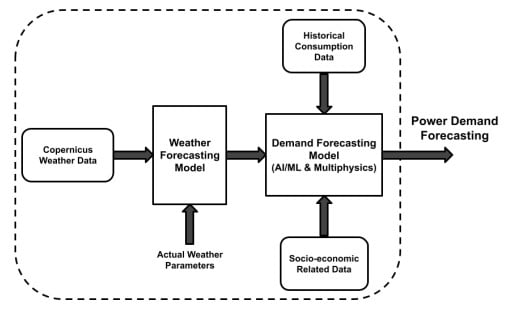
Designed with futureproofing in mind, the RESPONDENT suite has also been built to adapt as energy systems continue to evolve. Its modular architecture accommodates increasing numbers of data sources, nodes, and users without requiring significant reconfiguration, ensuring scalability as grids expand. Additionally, the platform’s customisable design allows it to meet the specific requirements of different regions, climates, and user scenarios, making it a versatile solution for diverse energy management challenges.
While the main users of the full solution suite are anticipated to be grid operators, especially those who offer renewable energy, the RESPONDENT modules can also be exploited separately, in which case the range of potential users widens to include distribution/transmission system operators, renewable energy source providers, building management companies, PMU manufacturers and more.
By delivering these benefits, the RESPONDENT Suite supports informed decision-making, efficient grid operations, and the seamless integration of renewable energy sources into modern energy systems. Its flexible, future-ready design ensures it remains a critical tool in advancing sustainable and resilient energy infrastructures.
The full RESPONDENT solution suite will be available from May 2025.
Climate impacts resilience and investor confidence
By delivering these technological advancements, the RESPONDENT Suite not only optimises energy management but also addresses the critical challenges facing modern energy systems. Its ability to unify data, enhance decision-making and adapt to evolving grids lays a strong foundation for tackling broader issues, such as climate resilience and the integration of renewable energy sources. These capabilities directly contribute to building a sustainable, reliable and investor-friendly energy landscape—a necessity in the face of accelerating climate change and its impact on global energy systems.
RESPONDENT aims to tackle a wide range of challenges that currently hinder increased levels of RES integration into existing power grids, from addressing the immediate technical hurdles faced by grid operators to advancing weather prediction accuracy. Beyond these more immediate goals, the ethos of the project has striven to contribute to a broader vision of sustainable, resilient and efficient energy systems, aligning with the EU’s Green Deal and the global push for a low-carbon future in response to the undeniable and catastrophic impacts of climate change.

Indeed, the alarming frequency of extreme weather events has and will continue to highlight the critical need for stable energy supplies. RESPONDENT’s tools equip grid operators with real-time insights and predictive capabilities, reinforcing uninterrupted power delivery even in challenging conditions. This resilience is particularly valuable in regions that are heavily reliant on renewable energy, and where grid stability is often more vulnerable.
RESPONDENT also seeks to bolster investor confidence in renewable energy by mitigating operational risks and stabilising market conditions, thus driving further adoption across the energy sector. Enhanced forecasting capabilities will help increase trust in RES by mitigating the risk of imbalances and, in turn, reducing the need for costly backup systems that are a barrier for many to invest. Improved grid management lowers operational inefficiencies and maintenance costs, while precise predictions of energy supply and demand stabilise market prices, thus benefitting both producers and consumers alike.
A global solution for a shared challenge
While RESPONDENT is funded under the EU’s Horizon Europe programme, its solutions have relevance that can be applied on a global scale. Countries such as India, China and the United States, which face similar challenges in managing grid variability, can adapt RESPONDENT’s methodologies to their respective regulatory and technical environments. The adaptability of the project’s solution
suite and/or its individual modules offers the potential for international collaboration and knowledge exchange, further amplifying the project’s impact and the truly global scale of its vision.
Similarly, RESPONDENT offers significant benefits across the entire energy ecosystem. Energy producers can optimise their market participation through better RES output predictions, while policymakers gain actionable insights to develop more effective energy transition strategies. During crises, such as extreme weather events, RESPONDENT’s forecasting tools enhance resilience by providing early warnings, enabling proactive energy management.
Moreover, RESPONDENT supports the integration of decentralised renewable systems, such as rooftop solar and community wind projects, into the broader grid. These solutions empower local communities, promote energy equity, and illustrate RESPONDENT’s potential to drive systemic change and resilience across the energy sector.
A blueprint for renewable integration
By delivering cutting-edge tools for forecasting, synchronisation and grid management, RESPONDENT is an ambitious project that not only supports Europe’s clean energy transition, but also provides a model for global adoption and a blueprint for the adoption of renewable energy sources.
As the global transition towards greater adoption of renewable energy accelerates, the solutions pioneered by RESPONDENT offer a scalable and adaptable blueprint for nations worldwide, proving that clean energy systems and grid stability can coexist. More than just a technical achievement, RESPONDENT’s innovations signal a future where energy independence, climate resilience and economic stability are achievable goals, driving us closer to a low-carbon world.
The RESPONDENT project has received funding from the European Union’s Horizon Europe research and innovation programme under Grant Agreement No. 101082355. The material presented and views expressed here are the responsibility of the author only. The EU Commission takes no responsibility for any use made of the information set out. For more information on the project, visit https://respondent-project.eu/.
Author
Ben Moore is senior EU project manager with Carr Communications Ltd in Ireland and the dissemination and communication manager of the RESPONDENT project. A Horizon Europe project, RESPONDENT consists of experts in the fields of energy transition, information and communication technologies, construction, research and more, and is made up of eight partner organisations from Greece, Spain and Ireland.


